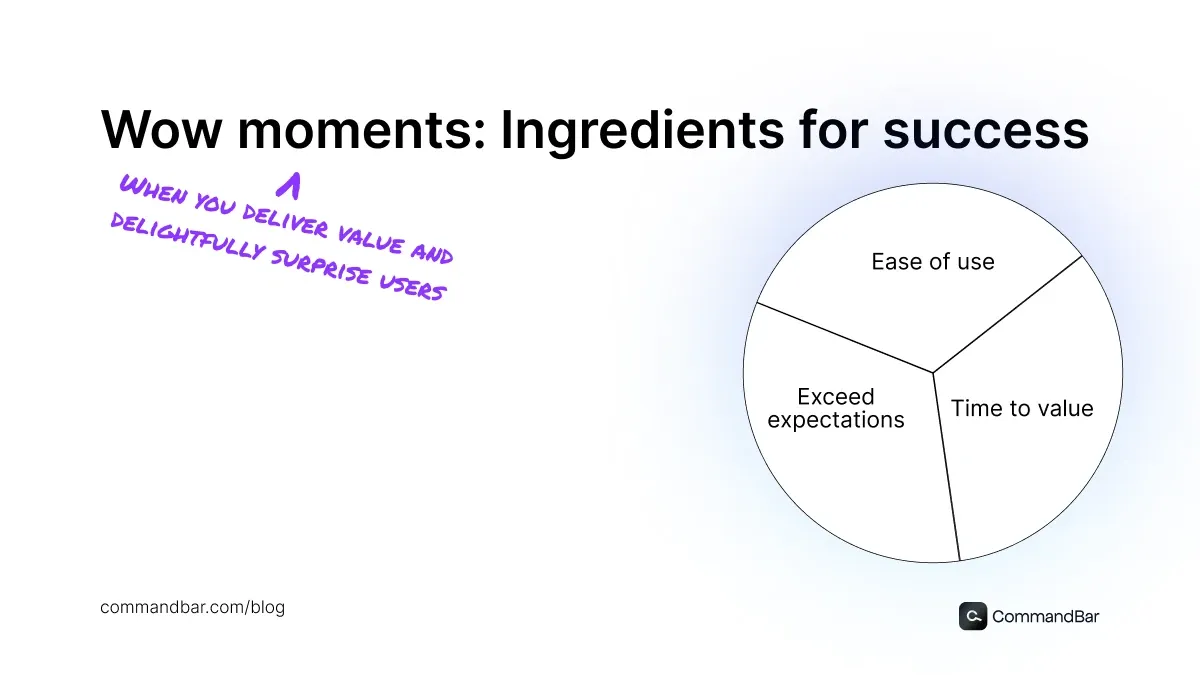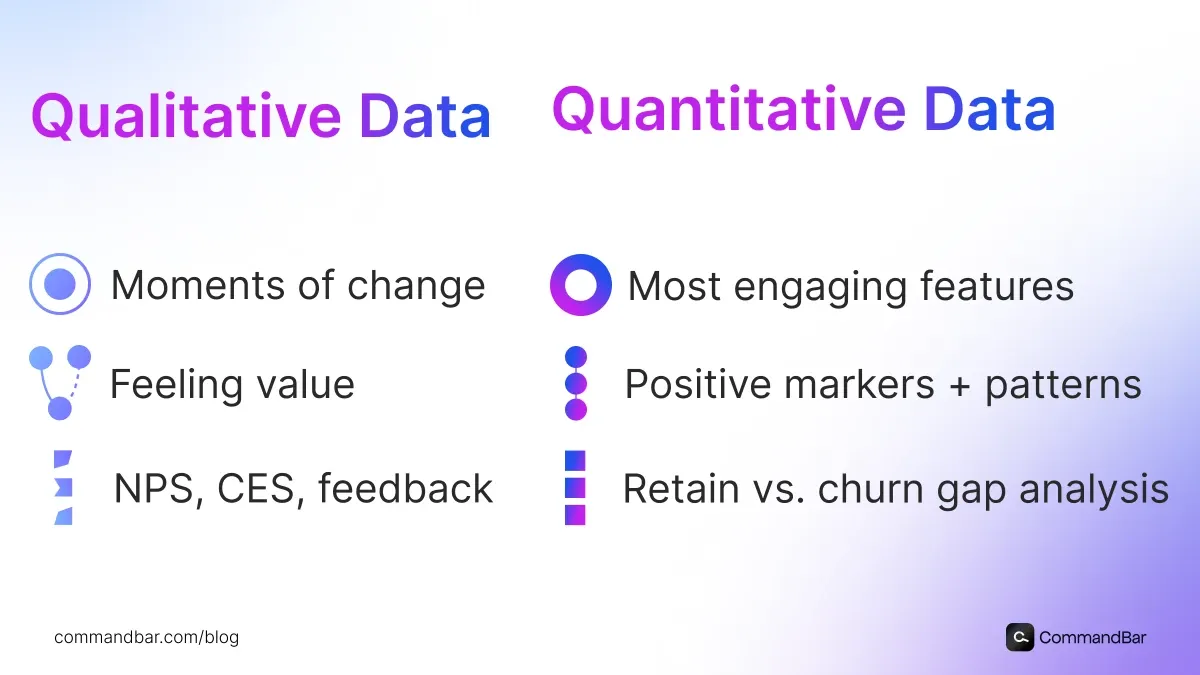What is a Wow moment and how can you optimize your product for them?
Wow moments are critical for your long-term product retention and user satisfaction. But creating these Wow moments is hard.

I remember when I first logged into ChatGPT. I'd been hearing about it on Twitter and from friends and was curious to see how it performed.
I still recall the details of my first session in late 2022. I logged in and began to ask it questions.
Quickly, answers appeared with a concise but informative structure.
After a few minutes, as ChatGPT proficiently handled more and more difficult queries, I felt a rush of excitement and adrenaline. I realized the power of this tool and how impactful it would be for my work and the world.
This was a “wow” moment.
I was highly impressed by ChatGPT.
It exceeded all of my expectations.
It was very easy to onboard and begin to use.
Since then, I’ve been a huge advocate for generative AI for research and as a future competitor to Google Search.
This is a classic "Wow" moment.
Why Wow moments matter
Here at Command AI, we call them “Owen Wilson” moments.
Ok we don’t call them that. But they do matter!
Wow moments are critical for your long-term product retention and user satisfaction.
Creating these Wow moments is hard. It requires a deep understanding of your customers and a willingness to dig into your quantitative and qualitative user data.
To be effective, and true Wow moments, they must occur early. Why?
Wow moments are rooted in emotion. It's when your product goes from an interesting, maybe nice-to-have thing, to a need-to-have, something they love and find critical.
The most impressionable and salient opportunity is at the earliest stage of the relationship with your product, when they have set expectations but a blank slate of actual judgment.
To wow them is to shatter that notion and go beyond.
It's when the user becomes so impressed by how your product has exceeded their expectations and delivered an amazing amount of value in a short period that they literally or figuratively say “WOW!”
The impact of a Wow moment
Delivering early Wow moments to folks produces long-lasting effects.
Not only do they become more likely to fully onboard and activate, but down the line, you'll find that they're more likely to retain and expand their business with you and, perhaps most importantly, become advocates who drive further growth for your product by referring their friends, family, and co-workers to it.
So, not only does the sales cycle become easier, reducing the burden on your salespeople to convert folks manually, but you also get higher lifetime value and lower customer acquisition costs, particularly for products using a PLG motion.
The “what” behind the “WOW”
I’ve emphasized that these moments must occur in the beginning, when users are first forming impressions of your product. But let’s dig into that a bit more.
Attention is fickle.
At Command AI, we live by the adage that your users have about ten times less attention span than you think they do.
The reality is that a wave of content has inundated every moment of our personal and professional lives, and it has truncated our attention spans and conditioned us to want things immediately, with little patience.
If you think folks will watch a three-minute onboarding video, they might not.
If you think everybody will click through your ten-step product tour, they probably won’t.
In both intuitive UI design and in optimizing for Wow moments, less is more!
That's why that first session and the few that follow it are so critical to producing a Wow moment and capturing all of its associated long-term benefits.
But that can be hard to do. It's not easy to create value that quickly, but there are ways to do it, which we'll dig into.
But to do that, we need to understand the core principles behind a Wow moment.

Core concept behind the “wow” moment
The first principle is to exceed expectations.
Think about what your user wants to achieve in your product and how you can wow them in that first session or the first few. How can you go above and beyond those expectations and deliver an experience that is genuinely surprisingly powerful?
The second core principle is to accelerate time to value. Time to value describes the time it takes a new user to experience the value of your product.
In the example I gave above with ChatGPT, it was a matter of minutes. For others, it might be a matter of seconds, like if you're automating a process that once took hours into a handful of seconds with an API call.
Or it might be a couple of days if you’re an HR logistics platform that takes time to set up and truly experience.
There's no one answer for the “right” time-to-value ratio, but it should be better than your competitors and better than folks expect.
If your product can deliver real value in the first couple of days or hours or seconds, you're likely to trigger a wow moment and lead to all of the fantastic benefits that we talked about above.
Finally, your product should be generally easy to use. It should have intuitive UX and be approachable, with parity and feature taxonomy users will quickly understand.
But how do we actually identify wow moments?
Using quantitative and qualitative data to identify Wow moments
You can analyze both qualitative and quantitative user data to fuel discovery of Wow moments.

Qualitative data
We all know it's important to be engaging with users, but how does that inform your discovery of the wow moments?
Through more manual actions like user interviews, feedback sessions, and research, you can connect your customer journey and product experience with actual defined user moments.
You might ask them:
Is there a moment that changed your perception of the product for the better?
When did you really feel the value of our product?
Add to that all of the in-app messaging you can be doing to serve up surveys, feedback forms, nudges, and other user intent data points, and you've got a bunch of different things you can use to fuel your qualitative data exploration.
Quantitative data
On the quantitative side, you can:
- Look at the most used features and try to understand why they get the most engagement
- Observe positive actions, like someone upgrading to a paid pan, or someone inviting someone else to the network
- Observe broad behavior patterns across different cohorts
Essentially, you’re looking for signs of which features drive high engagement, what characteristics or behavior precedes positive behaviors like upgrades or upsells, or patterns of behavior across the product.
It can also be very instructive to compare the cohorts of upsold or retained users against those who churned.
Are there consistencies or differences?
Are the churned folks consistently missing a specific product feature or failing to use your product tours?
Look for signs differentiating your retained and happy users who likely experienced a Wow moment from those who churned.
Through this gap analysis, you might be able to find surprise Wow moments by looking at behavior and engagement with features between these two groups.
Creating wow moments
First and foremost, it is important to have great onboarding. That first impression means everything! Here are a few key principles to keep in mind:
Speedy and easy
First of all, your onboarding should be easy and fast.
If you think it needs five steps and five pages, try to cut it down.
If you need to ask every question under the moon, try cutting it down.
You want to really focus on gathering the key information you need to personalize their experience with a minimal amount of questions.
Clearly call out your features
After you gather their information and match users into a user cohort, you want to highlight key relevant features with product tours, checklists, interactive walkthroughs, nudges, tooltips, and more. Make sure that you demonstrate what your features are capable of and match that up with the intent you believe they have from the onboarding they've just done.
Dopamine!
Everyone likes to win. So feed your users some quick wins!
Try and find ways for them to log successes. For example, if you've got a product centered around one core feature, like running a program or executing a task, you might want to guide them through their first example.
I wrote about using Make to automate a workflow. When you onboard with them, they break it down and basically help you build your first automation. So, within ten minutes, I'd gone ahead and built one and saw how that was going to save me a lot of time—wow!
You MUST personalize
Without a generally clean and intuitive user experience-focused design, you might fail to wow folks as well. It has to be responsive and dynamic, clean and clear, and fit users' aesthetic and parity expectations.
More than anything, it needs to be customized and personalized.
I can't emphasize enough how we've seen companies fail when they don't correctly segment their user base and create experiences that matter for that user.
We could provide them with all the tools and tactics in the world, only for them to execute incorrectly with one-size-fits-all, non-personalized nudges and experiences.
Even within a product with just a few core functions and user groups, there can be so many variations that you need to deliver on.
So, you have to be adaptive.
You can't tailor it to each individual user on a case-by-case basis. Still, you can get close by creating properly segmented groups, understanding those user journeys, mapping them out ahead of time, and then optimizing for wow moments with the tenets above.
Them, you can set up targeted custom nudges and tours, as well as AI-powered agents that can address any question, that can help you do this on a more automated level.
Turning wow moments into revenue-driving events
How do you turn wow moments once you've identified them and seen their power into product improvements and revenue-driving events?
We found that customers who use nudges at or around Wow moments can get the user to do something valuable, like convert to a paid plan, expand their usage, invite a teammate, leave a review, or any other positive action much more effectively than if you blanket target folks based on when you think things are happening, or at predetermined times, like seven days or 24 hours or 30 days.
Once you identify your wow moment, consider capturing the energy and enthusiasm into the right contextual nudge.
Let me say that again: the right contextual nudge.
Imagine that a user has just initially onboarded into the product and reached a wow moment. You know statistically that folks are jazzed when they get to this stage AND that your product is better with collaborators/teammates. This might also be the perfect time to prompt them to invite a teammate to experience this feature.
On the other hand, if you don't have a collaborative product, it might make more sense to use this moment to offer a discount and a nudge towards an upgrade with a discount code or promotional offer.
Alternatively, if users reach a while moment, they're more likely to submit a positive public review or rating, so consider prompting them.
You want to make sure that your users are Wow’ed and that you're appropriately, contextually, and un-intrusively targeting them with nudges and other actions that turn these wow moments into wins for your team as well.
P.S. Just make sure you don’t mess this up, like when an app I just downloaded asks me for a review (really!?).
